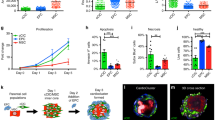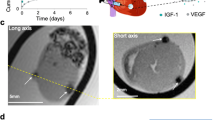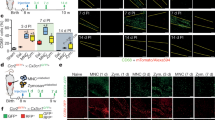Abstract
Clinical trials in cardiac cell-based therapy (CBT) have demonstrated the immense potential of stem progenitor cells (SPCs) to repair the injured myocardium. The bulk of evidence so far has shown that CBT can lead to structural and functional improvements. Unresolved issues remain, however, including gaps in the understanding of mechanisms and mixed results from CBT trials. To try to provide answers for these issues, assessment of the biological fate of SPCs once delivered to the injured heart has been called for. Advances in contrast agents and imaging modalities have made feasible the objective assessment of the in vivo molecular and cellular evolution of transplanted SPCs. In vivo imaging can target fundamental processes related to SPCs to gain information on their biological activities and outcomes within specific authentic microenvironments. Advantages and inherent drawbacks of imaging techniques, such as reporter-gene systems, optical imaging, radionuclide imaging, and MRI, are discussed in this Review. More than ever, it has become clear to scientists and clinicians that parallel developments in cell-based therapies and in vivo imaging modalities will strengthen this blossoming field.
Key Points
-
Cell-based therapy using stem progenitor cells (SPCs) shows great clinical promise
-
Clear understanding of the biological fate of transplanted SPCs still needs to be ascertained
-
Imaging techniques, such as reporter-gene-based, optical-based, radionuclide-based, and magnetic resonance-based modalities, offer tremendous potential in terms of in vivo SPC tracking for preclinical and clinical applications
-
In vivo imaging modalities with improved accuracy that can provide long-term serial assessment of the biodistribution and fate of SPCs are required
This is a preview of subscription content, access via your institution
Access options
Subscribe to this journal
Receive 12 print issues and online access
$209.00 per year
only $17.42 per issue
Buy this article
- Purchase on Springer Link
- Instant access to full article PDF
Prices may be subject to local taxes which are calculated during checkout

Similar content being viewed by others
References
Bolli R (2005) Foreword—focused issue on cardiac repair by stem cells. Basic Res Cardiol 100: 469–470
Beltrami AP et al. (2004) Evidence that human cardiac myocytes divide after myocardial infarction. N Engl J Med 344: 1750–1757
Wagers AJ and Weissman IL (2004) Plasticity of adult stem cells. Cell 116: 639–648
Dimmeler S et al. (2005) Unchain my heart: the scientific foundations of cardiac repair. J Clin Invest 115: 572–583
Boyle AJ et al. (2006) Is stem cell therapy ready for patients? Stem cell therapy for cardiac repair: ready for the next step. Circulation 114: 339–352
Fuster V and Sanz J (2007) Gene therapy and stem cell therapy for cardiovascular diseases today: a model for translational research. Nat Clin Pract Cardiovasc Med 4 (Suppl 1): S1–S8
Rosenzweig A (2006) Cardiac cell therapy—mixed results from mixed cells. N Engl J Med 355: 1274–1277
Frangioni JV and Hajjar RJ (2004) In vivo tracking of stem cells for clinical trials in cardiovascular disease. Circulation 110: 3378–3383
Wu JC et al. (2002) Positron emission tomography imaging of cardiac reporter gene expression in living rats. Circulation 106: 180–183
Wu JC et al. (2003) Molecular imaging of cardiac cell transplantation in living animals using optical bioluminescence and positron emission tomography. Circulation 108: 1302–1305
Franz WM et al. (1997) Analysis of tissue-specific gene delivery by recombinant adenoviruses containing cardiac-specific promoters. Cardiovasc Res 35: 560–566
Meyer N et al. (2000) A fluorescent reporter gene as a marker for ventricular specification in ES-derived cardiac cells. FEBS Lett 478: 151–158
Suzuki K et al. (2001) Cell transplantation for the treatment of acute myocardial infarction using vascular endothelial growth factor-expressing skeletal myoblasts. Circulation 104 (Suppl 1): I207–I212
Frangioni JV (2003) In vivo near-infrared fluorescence imaging. Curr Opin Chem Biol 7: 626–634
Nakayama A et al. (2003) Quantitation of brown adipose tissue perfusion in transgenic mice using near-infrared fluorescence imaging. Mol Imaging 2: 37–49
De Grand AM and Frangioni JV (2003) An operational near-infrared fluorescence imaging system prototype for large animal surgery. Technol Cancer Res Treat 2: 553–562
Hoshino K et al. (2006) Three catheter-based strategies for cardiac delivery of therapeutic gelatin microspheres. Gene Ther 13: 1320–1327
Chen J et al. (2002) In vivo imaging of proteolytic activity in atherosclerosis. Circulation 105: 2766–2771
Gao X et al. (2005) In vivo molecular and cellular imaging with quantum dots. Curr Opin. Biotechnol 16: 63–72
Murasawa S et al. (2005) Niche-dependent translineage commitment of endothelial progenitor cells, not cell fusion in general, into myocardial lineage cells. Arterioscler Thromb Vasc Biol 25: 1388–1394
Chang GY et al. (2006) Overview of stem cells and imaging modalities for cardiovascular diseases. J Nucl Cardiol 13: 554–569
Blankenberg FG and Strauss HW (2002) Nuclear medicine applications in molecular imaging. J Magn Reson Imaging 16: 352–361
Jin Y et al. (2005) Determining the minimum number of detectable cardiac-transplanted 111In-tropolone-labelled bone-marrow-derived mesenchymal stem cells by SPECT. Phys Med Biol 50: 4445–4455
Bengel FM (2006) Nuclear imaging in cardiac cell therapy. Heart Fail Rev 11: 325–332
Hofmann M et al. (2005) Monitoring of bone marrow cell homing into the infarcted human myocardium. Circulation 111: 2198–2202
Döbert N et al. (2005) Increased FDG bone marrow uptake after intracoronary progenitor cell therapy. Nuklearmedizin 44: 15–19
Montet-Abou K et al. (2005) Transfection agent induced nanoparticle cell loading. Mol Imaging 4: 165–171
Metz S et al. (2004) Capacity of human monocytes to phagocytose approved iron oxide MR contrast agents in vitro. Eur Radiol 14: 1851–1858
Hill JM et al. (2003) Serial cardiac magnetic resonance imaging of injected mesenchymal stem cells. Circulation 108: 1009–1014
Frank JA et al. (2003) Clinically applicable labeling of mammalian and stem cells by combining superparamagnetic iron oxides and transfection agents. Radiology 228: 480–487
Arai T et al. (2006) Dual in vivo magnetic resonance evaluation of magnetically labeled mouse embryonic stem cells and cardiac function at 1.5 T. Magn Reson Med 55: 203–209
Amado LC et al. (2005) Cardiac repair with intramyocardial injection of allogeneic mesenchymal stem cells after myocardial infarction. Proc Natl Acad Sci USA 102: 11474–11479
Lewin M et al. (2000) Tat peptide-derivatized magnetic nanoparticles allow in vivo tracking and recovery of progenitor cells. Nat Biotechnol 18: 410–414
Bulte JW et al. (2001) Magnetodendrimers allow endosomal magnetic labeling and in vivo tracking of stem cells. Nat Biotechnol 19: 1141–1147
Graham JJ et al. (2006) Magnetic resonance imaging and its role in myocardial regenerative therapy. Regen Med 1: 347–355
Arbab AS et al. (2006) Cellular magnetic resonance imaging: current status and future prospects. Expert Rev Med Devices 3: 427–439
Zhou R et al. (2006) Imaging stem cells implanted in infarcted myocardium. J Am Coll Cardiol 48: 2094–2106
Bara C et al. (2006) In vivo echocardiographic imaging of transplanted human adult stem cells in the myocardium labeled with clinically applicable CliniMACS nanoparticles. J Am Soc Echocardiogr 19: 563–568
Morawski AM et al. (2005) Targeted contrast agents for magnetic resonance imaging and ultrasound. Curr Opin Biotechnol 16: 89–92
Rosen AB et al. (2007) Finding fluorescent needles in the cardiac haystack: tracking human mesenchymal stem cells labeled with quantum dots for quantitative in vivo three-dimensional fluorescence analysis. Stem Cells 25: 2128–2138
Assmus B et al. (2006) Transcoronary transplantation of progenitor cells after myocardial infarction. N Engl J Med 355: 1222–1232
Wollert KC et al. (2004) Intracoronary autologous bone-marrow cell transfer after myocardial infarction: the BOOST randomised controlled clinical trial. Lancet 364: 141–148
Janssens S et al. (2006) Autologous bone marrow-derived stem-cell transfer in patients with ST-segment elevation myocardial infarction: double-blind, randomised controlled trial. Lancet 367: 113–121
Lunde K et al. (2006) Intracoronary injection of mononuclear bone marrow cells in acute myocardial infarction. N Engl J Med 355: 1199–1209
Schachinger V et al. (2006) Intracoronary bone marrow-derived progenitor cells in acute myocardial infarction. N Engl J Med 355: 1210–1221
Author information
Authors and Affiliations
Corresponding author
Ethics declarations
Competing interests
The authors declare no competing financial interests.
Rights and permissions
About this article
Cite this article
Ly, H., Frangioni, J. & Hajjar, R. Imaging in cardiac cell-based therapy: in vivo tracking of the biological fate of therapeutic cells. Nat Rev Cardiol 5 (Suppl 2), S96–S102 (2008). https://doi.org/10.1038/ncpcardio1159
Received:
Accepted:
Issue Date:
DOI: https://doi.org/10.1038/ncpcardio1159



